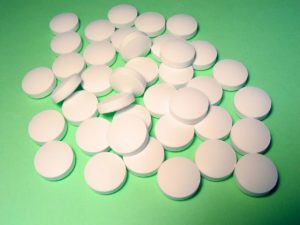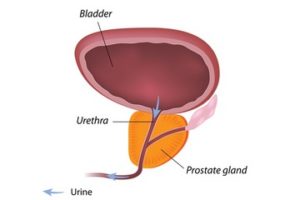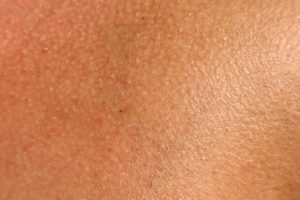 A number of recent studies and articles have discussed the effectiveness of diet in treating or preventing depression with the main conclusion that yes, it helps. Now an observational study (that will be presented in April) found that elderly people following the DASH diet most closely were 11% less likely to become depressed over time than those that did not.
A number of recent studies and articles have discussed the effectiveness of diet in treating or preventing depression with the main conclusion that yes, it helps. Now an observational study (that will be presented in April) found that elderly people following the DASH diet most closely were 11% less likely to become depressed over time than those that did not.
Researchers studying 964 elderly participants over six and a half years found that those who followed the DASH diet, which emphasizes whole grains, fruits, and vegetables, had lower rates of depression, while those who ate a traditional Western diet were more prone to depression. The DASH (Dietary Approaches to Stop Hypertension) diet also emphasizes low sodium (salt) to lower blood pressure, as well as foods rich in nutrients (such as potassium, calcium, and magnesium) that are thought to lower blood pressure.
The study's lead author L. J. Cherian (at Rush Medical Center in Chicago) said that "we need to view food as medicine”. Yes. Eating more fruits and vegetables, whole grains, legumes, seeds, nuts have many health benefits (such as cardiovascular benefits, improving the gut microbes) - a win-win. From Science Daily:
Diet shown to reduce stroke risk may also reduce risk of depression
People who eat vegetables, fruit and whole grains may have lower rates of depression over time, according to a preliminary study that will be presented at the American Academy of Neurology's 70th Annual Meeting in Los Angeles, April 21 to 27, 2018. The study found that people whose diets adhered more closely to the Dietary Approaches to Stop Hypertension (DASH) diet were less likely to develop depression than people who did not closely follow the diet. In addition to fruit and vegetables, the DASH diet recommends fat-free or low-fat dairy products and limits foods that are high in saturated fats and sugar. Studies have shown health benefits such as lowering high blood pressure and bad cholesterol (LDL), along with lowering body weight. ...continue reading "DASH Diet Linked To Lower Rate of Depression"


 A recent study of pregnant women found new health problems with the pesticide glyphosate, which is the active ingredient in the weedkiller Roundup (made by Monsanto).
A recent study of pregnant women found new health problems with the pesticide glyphosate, which is the active ingredient in the weedkiller Roundup (made by Monsanto).
 People often wonder if there are any health benefits to buying organic milk versus conventional milk. And further, how about grass-fed organic milk? Now a
People often wonder if there are any health benefits to buying organic milk versus conventional milk. And further, how about grass-fed organic milk? Now a  Just read about an international study that discussed how millions of bacteria and viruses circle the earth in the earth's atmosphere every day, and get deposited on land by rain and dust particles. Which could explain why similar viruses and bacteria are found in totally different environments in different parts of the world.
Just read about an international study that discussed how millions of bacteria and viruses circle the earth in the earth's atmosphere every day, and get deposited on land by rain and dust particles. Which could explain why similar viruses and bacteria are found in totally different environments in different parts of the world. 
 Are there foods that could prevent cancer? Well... studies show that a dietary pattern with lots of fiber, and perhaps along the lines of the Mediterranean diet, may be the most beneficial. In other words, it's not just one or a few "super-foods" that a person should eat, but an overall dietary pattern. But one specific food does appear beneficial for health -
Are there foods that could prevent cancer? Well... studies show that a dietary pattern with lots of fiber, and perhaps along the lines of the Mediterranean diet, may be the most beneficial. In other words, it's not just one or a few "super-foods" that a person should eat, but an overall dietary pattern. But one specific food does appear beneficial for health -  Recently I was asked about the human skin microbiome (skin microbial communities) and whether the things we do frequently (e.g. use soap and shampoo, go swimming in a pool) has an effect on our skin microbiome. As I've posted earlier, human skin microbes include bacteria, fungi, viruses, and archaea. Most of these microbes are harmless or beneficial, but when the microbial communities are out of whack (dysbiosis), then there are diseases or skin disorders (such as acne, psoriasis, and eczema). The human skin acts as a physical barrier, a first line of defense, to
Recently I was asked about the human skin microbiome (skin microbial communities) and whether the things we do frequently (e.g. use soap and shampoo, go swimming in a pool) has an effect on our skin microbiome. As I've posted earlier, human skin microbes include bacteria, fungi, viruses, and archaea. Most of these microbes are harmless or beneficial, but when the microbial communities are out of whack (dysbiosis), then there are diseases or skin disorders (such as acne, psoriasis, and eczema). The human skin acts as a physical barrier, a first line of defense, to